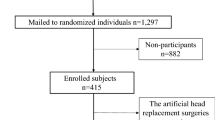Abstract:
Alendronate therapy in osteoporotic women decreases bone turnover and increases bone mineral density (BMD). Optimal patient management should include verification that each patient is responding to therapy. Markers of bone turnover and BMD have both been proposed for this purpose. We have investigated changes resulting from alendronate therapy with an enzyme immunoassay for bone alkaline phosphatase (BAP) and compared it with total alkaline phosphatase (TAP) and BMD of the lumbar spine, hip, and total body. Subjects were drawn from a multicenter randomized, placebo-controlled trial of alendronate in postmenopausal women with osteoporosis. BAP and TAP levels were measured at baseline and following 3, 6 and 12 months of therapy with either placebo (n= 180) or alendronate 10 mg/day (n= 134). All subjects also received 500 mg/day supplemental calcium. BMD was measured at baseline and following 3, 6, 12, 18, 24 and 36 months of therapy. To compare BAP, TAP and BMD at each site for identifying women that experienced a skeletal effect of alendronate, we calculated least significant change (LSC) values from the long-term intraindividual variability in each placebo-treated woman. Median levels of BAP decreased by 34%, 44% and 43% at 3, 6 and 12 months, respectively, in alendronate-treated women (p<0.0001 compared with baseline and with placebo). These changes were significantly greater (p<0.0001) than changes observed for TAP. Following 6 months of alendronate therapy, 90% of the women had experienced a decrease in BAP exceeding the LSC compared with only 71% for TAP. The greatest number of women similarly identified with BMD at any site (i.e. a gain in BMD exceeding the LSC) was 81% for spinal BMD at 36 months. All other sites were less than 70% at 36 months. Short-term changes in BAP and TAP were modestly associated with subsequent changes in BMD at all sites (Spearman’s rho −0.22 to −0.52, p<0.05). Compared with TAP and BMD, BAP testing rapidly and sensitively identified skeletal effects of alendronate thus enabling appropriate drug monitoring of osteoporotic women. Though BAP and TAP changes were modestly predictive of BMD changes, the value of the bone marker tests is their ability to detect rapidly a skeletal effect of therapy.
Similar content being viewed by others
Author information
Authors and Affiliations
Additional information
Received: 19 May 2000 / Accepted: 31 October 2000
Rights and permissions
About this article
Cite this article
Watts, N., Jenkins, D., Visor, J. et al. Comparison of Bone and Total Alkaline Phosphatase and Bone Mineral Density in Postmenopausal Osteoporotic Women Treated with Alendronate . Osteoporos Int 12, 279–288 (2001). https://doi.org/10.1007/s001980170117
Published:
Issue Date:
DOI: https://doi.org/10.1007/s001980170117




